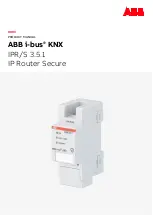
370
[Router-portal-websvr-newpt] quit
# Enable re-DHCP portal authentication on GigabitEthernet 1/0/2.
[Router] interface gigabitethernet 1/0/2
[Router–GigabitEthernet1/0/2] portal enable method redhcp
# Reference the portal Web server
newpt
on GigabitEthernet 1/0/2.
[Router–GigabitEthernet1/0/2] portal apply web-server newpt
# Configure the BAS-IP as 20.20.20.1 for portal packets sent from GigabitEthernet 1/0/2 to the
portal authentication server.
[Router–GigabitEthernet1/0/2] portal bas-ip 20.20.20.1
[Router–GigabitEthernet1/0/2] quit
Verifying the configuration
# Verify the portal configuration by executing the
display portal interface
command. (Details not
shown.)
# Display information about preauthentication portal users.
[Router] display portal user pre-auth interface gigabitethernet 1/0/2
MAC IP VLAN Interface
0015-e9a6-7cfe 10.10.10.4 -- GigabitEthernet1/0/2
State: Online
VPN instance: N/A
DHCP IP pool: N/A
User profile: N/A
Session group profile: N/A
ACL: 3010
Inbound CAR: N/A
Outbound CAR: N/A
Inbound priority: N/A
Outbound priority: N/A
Example: Configuring direct portal authentication using a
local portal Web service
Network configuration
As shown in
, the host is directly connected to the router (the access device). The host is
assigned a public IP address either manually or through DHCP. The router acts as both a portal
authentication server and a portal Web server. A RADIUS server acts as the
authentication/accounting server.
Configure direct portal authentication on the router. Before a user passes portal authentication, the
user can access only the portal Web server. After passing portal authentication, the user can access
other network resources.
Figure 129 Network diagram
















































